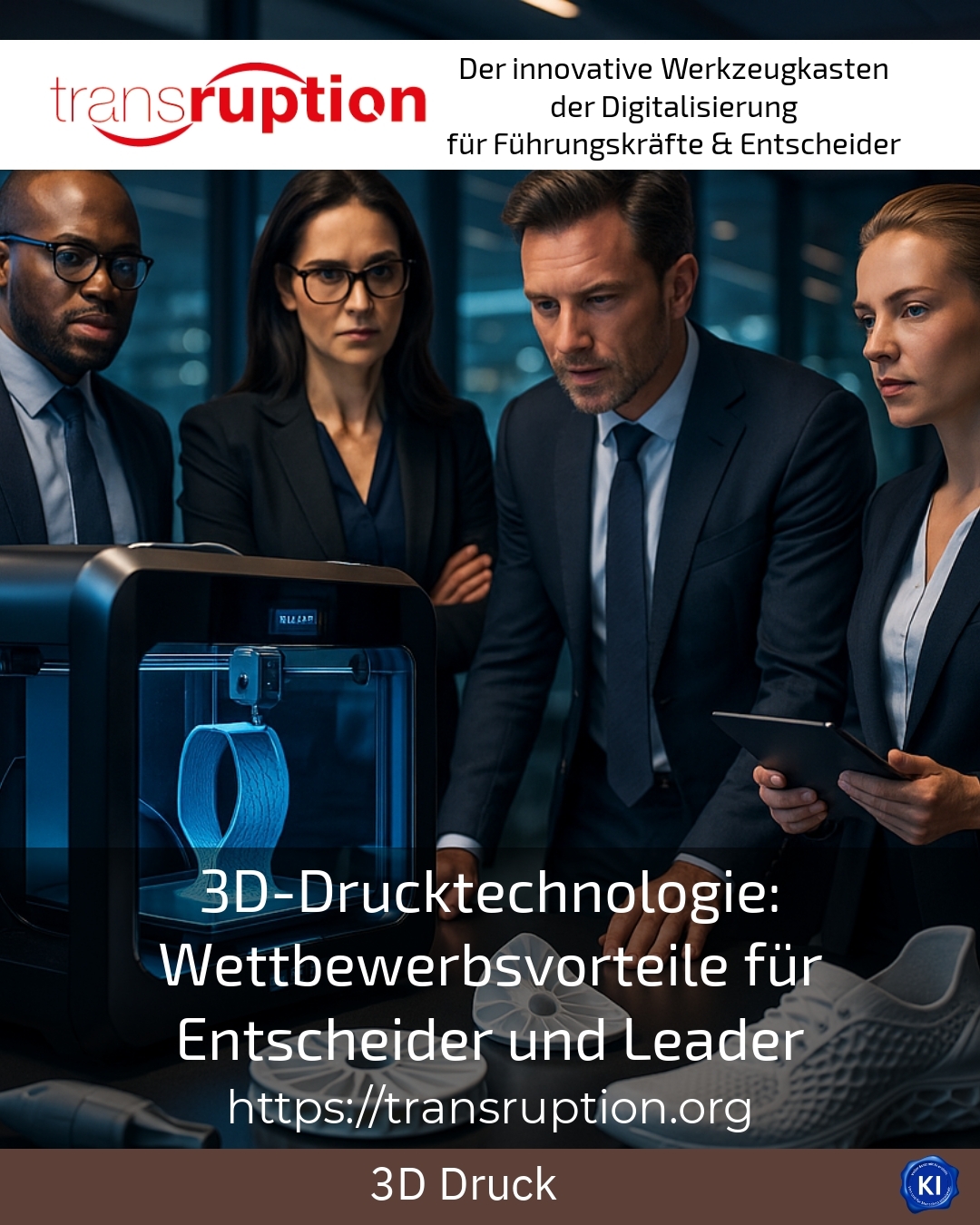3D printing technology has become a key to competitive advantages in numerous industries. For decision-makers and managers, it opens up new ways of making production, development and supply chain processes more flexible and efficient. Additive manufacturing helps companies to react more quickly to market requirements and optimise costs at the same time.
Flexibility and efficiency thanks to 3D printing technology
Decision-makers often face challenges such as long delivery times and high storage costs. 3D printing technology makes it possible to produce components exactly when they are needed. For example, a medium-sized mechanical engineering company can produce spare parts for remote markets directly on site. This reduces delivery times from weeks to just a few days and significantly increases customer satisfaction.
The ability to manufacture customised products economically in small batches is also a significant advantage. Medical technology companies, for example, use 3D printing for customised prostheses and implants, while the aerospace industry manufactures complex, lightweight components. This customisability strengthens customer loyalty and opens up new business potential.
3D printing technology also helps to speed up processes: Rapid prototyping shortens development times, as ideas can be realised and tested quickly. Errors can be recognised at an early stage, which reduces costs and speeds up the market launch. For example, one manufacturer was able to realise complex prototypes in just a few days, while competitors still had to rely on traditional production methods.
Sustainability as a competitive advantage with additive manufacturing
Additive manufacturing significantly reduces material waste, as components are built up layer by layer with pinpoint accuracy. In contrast to subtractive processes, in which material is cut off, it is more resource-efficient. Metal powder from certain 3D printing processes can also be recycled, which further reduces the ecological footprint.
Companies in the automotive industry are using 3D printing to reduce spare parts inventories in the long term. Instead of physically storing thousands of parts, they produce them digitally as required and print them quickly on site. This reduces storage costs and logistics risks, which is particularly beneficial in view of disrupted global supply chains.
Another advantage is energy saving: As no complex tools or moulds are required, there is no need for energy-intensive preparation. This not only makes production cheaper, but also more sustainable. Manufacturers in the jewellery and design sector are now producing customised products with less environmental impact.
Strategic strengthening through 3D printing technology
For managers, 3D printing technology offers a tool that goes far beyond pure production. They have a direct impact on the value chain by shortening delivery routes and reducing dependencies on individual suppliers. The digital planning and control of print jobs enables flexible adaptation to changing market requirements.
In the industrial environment, companies also use 3D printing to produce tools and devices themselves. This allows manufacturing processes to be continuously improved. One manufacturer from the electronics industry reported that special holding devices for assembly work were produced using 3D printing. This reduced throughput times and quality problems.
Technology is also opening up new possibilities in the craft sector. Confectioners produce customised decorations that are precisely tailored to customer requirements. Digital tools complement traditional craftsmanship and create additional sources of income. Such examples show how 3D printing combines technological innovation with creative entrepreneurship.
BEST PRACTICE at the customer (name hidden due to NDA contract) A mechanical engineering company drastically reduced delivery times for wear-prone special parts with the help of 3D printing. Digital manufacturing made it possible to significantly shorten time-to-market and respond flexibly to customer enquiries without incurring high storage costs for parts that are rarely needed.
Practical tips for implementation
1. start with pilot projects to test the benefits of 3D printing technology in your environment. This allows you to quickly recognise opportunities and challenges before larger investments follow.
2. promote knowledge transfer and qualification within the team. Employees need training to master the new technology and actively drive process innovation.
3. integrate digital control systems that make the printing process transparent. This allows you to optimise planning and keep an eye on the current order status at all times.
4 Ideally, use 3D printing as part of a holistic strategy that promotes innovation, efficiency and sustainability in equal measure.
My analysis
3D printing technology provides considerable added value for decision-makers and managers. It helps companies to react more flexibly to market changes, saves costs by reducing stock levels and enables more sustainable manufacturing processes. It also opens up new business models through customised and quickly available products. It is crucial to use this technology in a strategically targeted manner and to accompany it with suitable organisational measures. In this way, 3D printing offers a real competitive advantage in dynamic markets.
Further links from the text above:
3D printing technology: Your advantage for decision-makers and ...
6 underestimated benefits of 3D printing for your supply chain
3D printing: How managers can now gain a competitive edge ...
5 advantages (and disadvantages) of 3D printing
What are the advantages of 3D printing?
For more information and if you have any questions, please contact Contact us or read more blog posts on the topic TRANSRUPTION here.
















